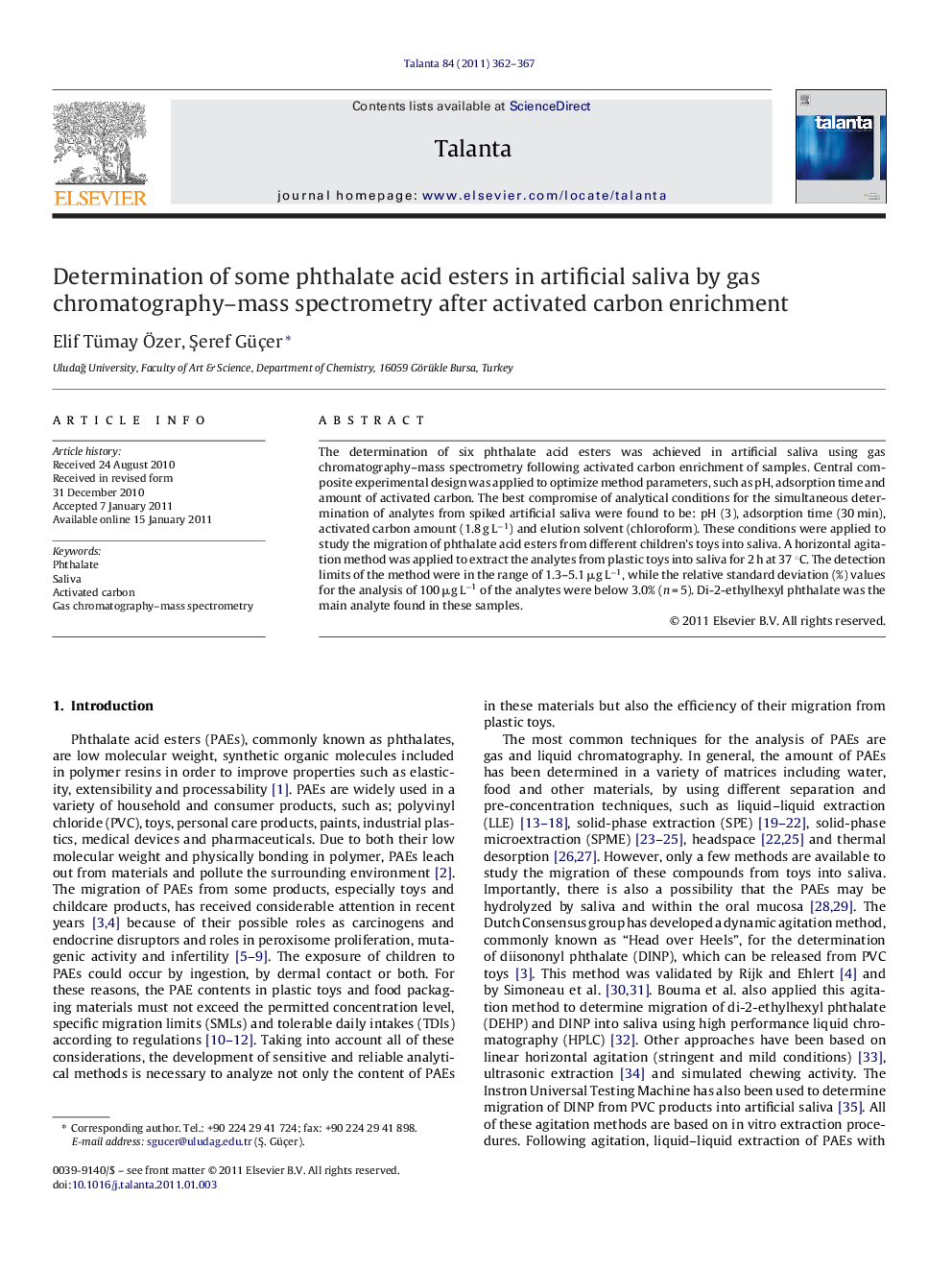| Article ID | Journal | Published Year | Pages | File Type |
|---|---|---|---|---|
| 10560125 | Talanta | 2011 | 6 Pages |
Abstract
The determination of six phthalate acid esters was achieved in artificial saliva using gas chromatography-mass spectrometry following activated carbon enrichment of samples. Central composite experimental design was applied to optimize method parameters, such as pH, adsorption time and amount of activated carbon. The best compromise of analytical conditions for the simultaneous determination of analytes from spiked artificial saliva were found to be: pH (3), adsorption time (30 min), activated carbon amount (1.8 g Lâ1) and elution solvent (chloroform). These conditions were applied to study the migration of phthalate acid esters from different children's toys into saliva. A horizontal agitation method was applied to extract the analytes from plastic toys into saliva for 2 h at 37 °C. The detection limits of the method were in the range of 1.3-5.1 μg Lâ1, while the relative standard deviation (%) values for the analysis of 100 μg Lâ1 of the analytes were below 3.0% (n = 5). Di-2-ethylhexyl phthalate was the main analyte found in these samples.
Related Topics
Physical Sciences and Engineering
Chemistry
Analytical Chemistry
Authors
Elif Tümay Ãzer, Åeref Güçer,
